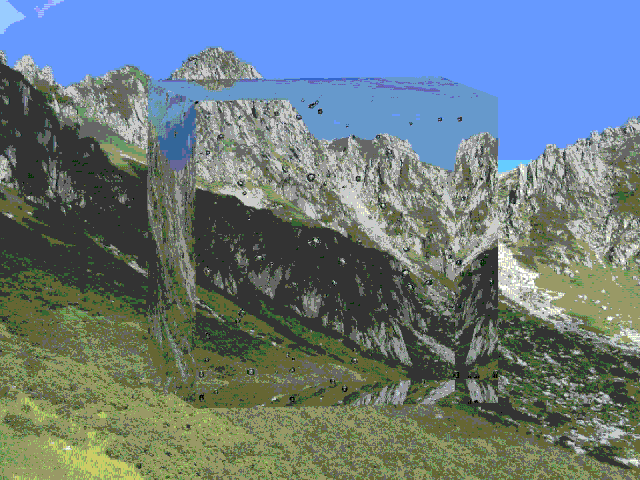The Physics of Champagne Bubbles Could Help Power the Future
Studying the principles that govern bubble formation in sparkling wine could improve power plant boilers
/https://tf-cmsv2-smithsonianmag-media.s3.amazonaws.com/filer/a8/7a/a87a9c45-bf46-4132-baac-9135c4f2710a/3154687431_e2255e4e2b_b.jpg)
Whatever the occasion, the pop of a Champagne cork means the release of pressure—both for the revelers about to imbibe and for the liquid within. Opening up the bottle changes the pressure on the liquid, allowing the dissolved carbon dioxide to bubble out and create the characteristic sparkle in your glass.
While the basics of why Champagne bubbles are pretty well known, scientists are still trying to solve some mysteries related to bubble formation. Perhaps surprisingly, bubbles in chilled Champagne behave similarly to those in the boiling water used in steam turbines, as well as bubbles in a variety of industrial applications.
“Bubbles are very common in our everyday life," says Gérard Liger-Belair, a physicist at the University of Reims in France. "They play a crucial role in many natural as well as industrial processes—in physics, chemical and mechanical engineering, oceanography, geophysics, technology and even medicine. Nevertheless, their behavior is often surprising and, in many cases, still not fully understood.”
One outstanding mystery is how quickly bubbles of different sizes form in liquids, something that could help engineers design more efficient boiler systems and improve output from steam-powered reactors. Using supercomputing power to simulate bubbling liquid, researchers in Japan have now confirmed that it all comes down to a math theory proposed in the 1960s.
“This is the first step to understand how bubbles appear and how bubbles interact each other during bubble formation [at] the molecular level,” says study co-author Hiroshi Watanabe, a physicist at the University of Tokyo. The results appear this month in the Journal of Chemical Physics.
In Champagne and in boiling water, bubbles undergo a transformation called Ostwald ripening, named for its discoverer, 19th-century German chemist Wilhelm Ostwald. He noticed that small particles of either a liquid or a solid in a solution will give way to larger ones, because larger particles are more energetically stable.
In the case of a bubble, molecules of liquid on a smaller surface are less stable and will tend to detach. At the same time, molecules will be drawn to the stable surfaces of larger bubbles. Over time, the number of small bubbles drops and the number of large bubbles grows, giving the overall liquid a coarser texture. “After many bubbles appear at the moment of uncorking a Champagne [bottle], the population of bubbles starts to decrease,” says Watanabe. “Larger bubbles become larger by eating smaller bubbles, and finally only one bubble will survive.” In addition to governing the bubble formation in your beverage, Ostwald ripening is behind the sandy texture of re-frozen ice cream, because it favors the formation of larger ice crystals when the melted mixture solidifies.
Beyond the food and drink realm, Ostwald ripening occurs in power plants where boilers heat water to harvest the thermal energy from steam. However, the intricacies of how bubbles form within boilers are not well understood, in part because it’s hard to re-create the sheer mass of bubbles at play in a lab.
Watanabe and colleagues from Kyusyu University and Japan’s RIKEN labs turned to the K computer, one of the world’s fastest supercomputers. They built a program to simulate the behavior of millions of virtual molecules within a constrained virtual space, in this case, a box. Assigning each molecule a speed, they watched how they moved and formed bubbles. The team found out that it takes about 10,000 molecules of liquid to form just one bubble, so they had to map the movement of roughly 700 million molecules to figure out how the bubbles behaved en masse. Here’s an animation of a scaled-down version of their simulations:

The models helped the team confirm that bubbles follow a mathematical framework devised in the 1960s called Lifshitz-Slyozov-Wagner (LSW) theory. At first, the speed at which the molecules could transition from liquid to gas governs the speed of bubble formation. This transformation happens at the surface of the bubble, so as the evaporation rate accelerates, the speed at which liquid molecules can reach the bubble's surface determines the rate of formation and growth.
Watanabe likens the relationship to a factory, where machines stand in for the bubble formation process: “If the performance of machines in the factory is poor, then the production rate of the factory is determined by the performance of the machines. If the performance of machines is good enough, then the production rate is determined by supply of source materials.”
In the heated pipes of a gas turbine system, bubbles can decrease heat exchange and cause wear when their popping exerts a small force on the pipe’s metal surface. The same thing happens when you put a propeller in water: Bubbles form, pop and gradually damage the blades. Turbines and propellers have been optimized to reduce the detrimental effects of bubbles, but, Watanabe points out, “deep insights about bubbles' behavior will help us to find breakthrough ideas to improve them.”
In addition to potentially aiding power plant efficiency, Watanabe sees applications for the work in other bubble-rich fields, such as those that use foams or metal alloys. “We believe that the understanding of the behavior of bubbles at the molecular level will help us to improve efficiency of many kinds of devices in the near future, “ he says.
Cheers to that.
/https://tf-cmsv2-smithsonianmag-media.s3.amazonaws.com/accounts/headshot/Screen_Shot_2014-01-27_at_12.05.16_PM.png)
/https://tf-cmsv2-smithsonianmag-media.s3.amazonaws.com/accounts/headshot/Screen_Shot_2014-01-27_at_12.05.16_PM.png)